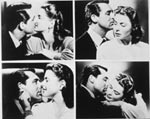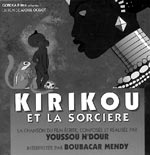 |
||||||||
 |
||||||||
| agenda | briefs | authors | ||||||||
 |
book news & reviews
by Scott Steedman
What does the end of the century, the end of the millennium, mean?
Do you agree with biologist Stephen Jay Gould, who thinks we don’t
share the vivid fear of apocalyptic catastrophe that haunted our
ancestors? The worst we can imagine is some half-baked computer
failure, or maybe a runaway 747 taking out the Tour Montparnasse.
“In the end,” he writes, “there’ll just be one big party, with
people all over the planet kissing each other.” “Century” This humongous, marvelous book weighs six kilos and comes in a
case with a handle. Even the subtitle, “One Hundred Years of Human
Progress, Regression, Suffering and Hope,” is a mouthful. It is
the best of many attempts to tell the history of the century in
photographs. “Age of Extremes” Now five years old, and a best-seller in its new French edition
(“L’Age des Extrêmes,” Complexe), this is a pithy history of this
century by an expert on the one before. Hobsbawm cleverly restricts
himself to the “short century,” from 1914 to the fall of the wall
in 1989, and views the world wars as a single conflict, the first
resolving nothing, the second everything. “The Earth From The Air” Already a huge seller in France (“La Terre Vue du Ciel,” La Martinière,
295F), this UNESCO-sponsored book is a bold attempt to fix the
state of the planet at the century’s close. It contains 195 astonishing
aerial pictures taken over 75 countries. Arthus-Bertrand has an
amazing eye, producing sumptuous and mysterious images of every
kind of landscape, from icebergs, islands, dunes and deltas to
an Iraqi tank graveyard, a Rio shantytown, and a Moroccan dye
market. The colors and patterns are breathtaking; how very strange
and beautiful the planet seems. “Conversations About the End of Time” Four big thinkers — a semiologist, a biologist, a novelist, and
an historian — tackle the impending apocalypse, if any. The ideas
come thick and fast, with even Eco talking coherently. He reminds
us that scary number 2000 should make us stop and think about
where we are going, something most of us don’t do enough. “The American Century” Two gigantesque volumes, almost 1,500 images from the Whitney
Museum’s much-talked-about exhibitions on American art. The first
volume is more of a social chronicle, with some awesome images
of Manhattan; the second explodes with abstract expressionism
and the in-your-face glories of pop. There is a little film and
music, but not much: hard to believe that Yoko Ono’s vagina paintings
merit more space than Spielberg’s films. “Rock: the Rough Guide” With respect to Spielberg and Yoko Ono, for my money the artform
of the century is rock ’n’ roll. So it is fitting that the long-awaited
second edition of the best book on the subject should appear just
before the curtain falls. Written by hundreds of fans via the
Net, this is a phenomenal compendium of fact and opinion, covering
1,400 acts, 10,000 albums and 500 pictures, all in an affordable
paperback. The Guardian called it a “sexy, all-conquering guide,
with big, brash entries colorfully written by opinionated maniacs,”
and I can’t put it better. “La Dolce Vita: Champagne” My favorite of the half a dozen new guides on bubbly, this slim
volume gives us anecdotes, theory, and just enough on vintners,
including some good gossip. Children’s Books “Madeline in America” Ludwig Bemelmans (Scholastic) “Kirikou et la Sorcière” by Michel Ocelot (Milan) Erratum: In last month’s issues we got the publisher of the “Paris Mon Amour” wrong. Apologies to Taschen, the real editor. |
|||||||
 |
||||||||
 |
||||||||
 |
||||||||
 |
||||||||
 |
||||||||